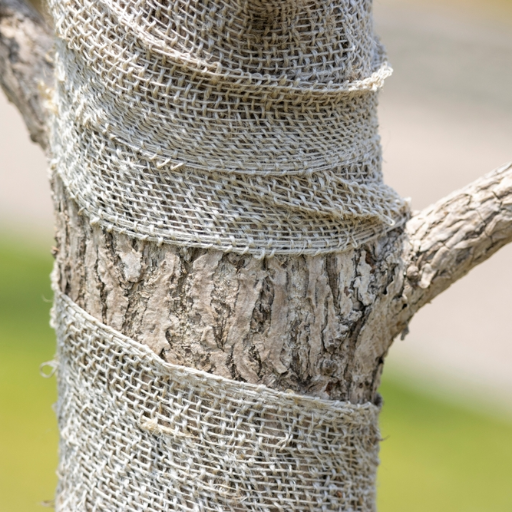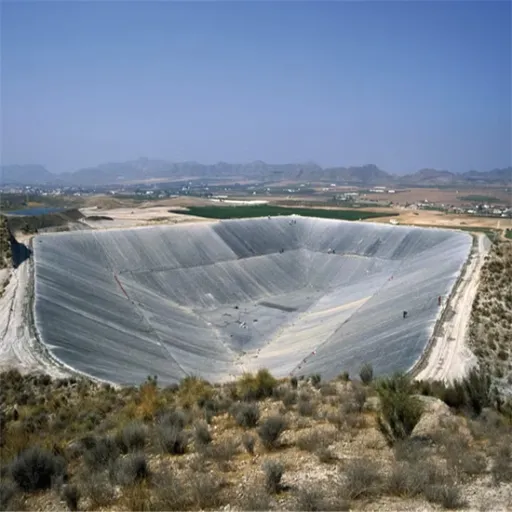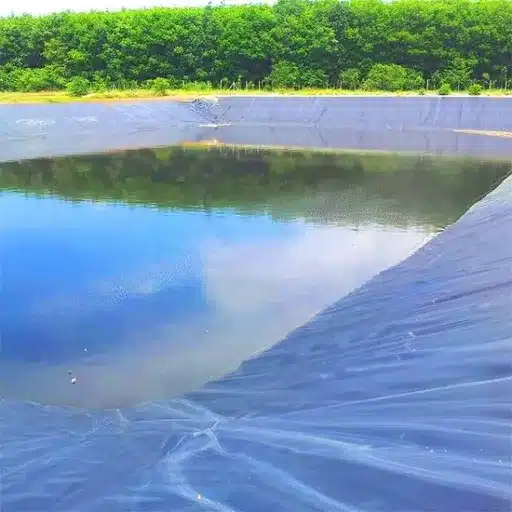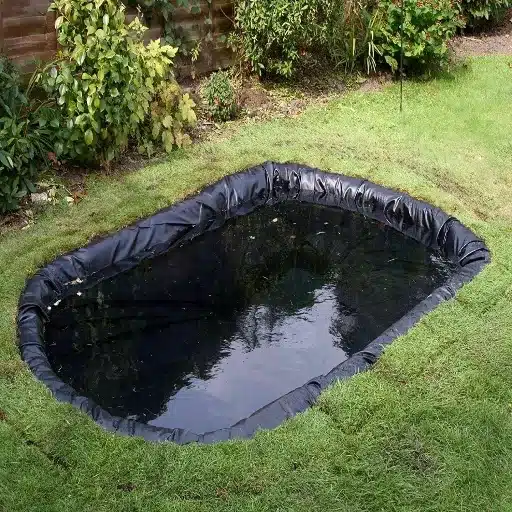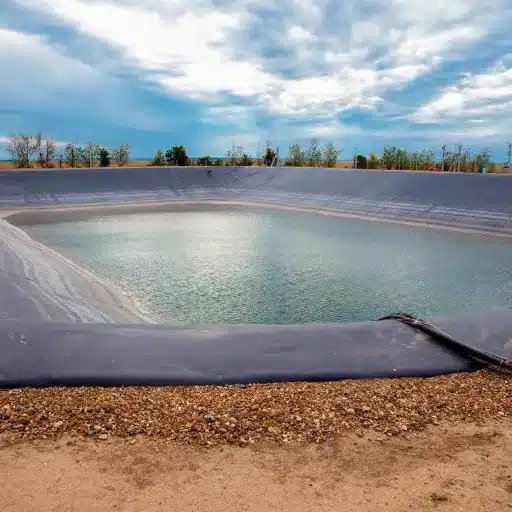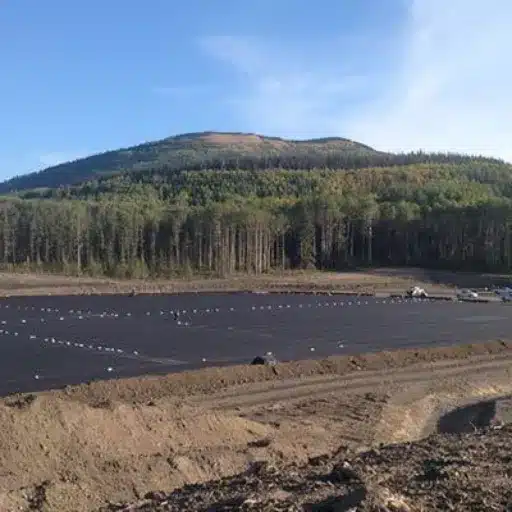Protecting young trees from damage is essential to their health and longevity, especially when the bark becomes susceptible due to environmental factors or injury. Damage to the tree bark would expose the inner layer, thus making the tree susceptible to pests, diseases, and further injury. Hence in this article, we will be exploring the importance of tree wraps as a suitable measure that protects young trunks against harsh conditions and allows for proper healing. If you are already experienced in gardening or just beginning, you will surely find some valuable tips and insights that will help keep your trees healthy in any environment. Keep reading to learn how to protect your trees and help them grow for years to come.
What Tree Wraps Are
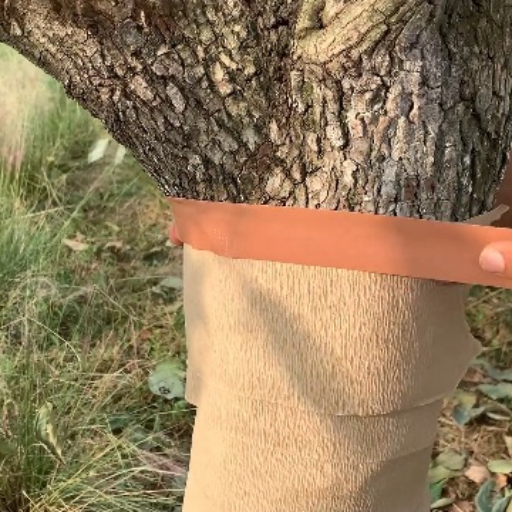
The term “tree wrap” is used to describe any protective material that is used to cover a tree trunk. These wraps have a very important role to play in protecting the trees from abiotic stresses like temperature extremes, sunscald, frost cracks, or even animal damage. Having wrapped trees will prevent interferences such as that and provide a suitable environment for a tree to grow so that it does not sustain any permanent damage. Tree wraps are really all it takes to protect your trees-well, certainly during their susceptible stages.
Why Bark Protection Is Great
The bark, in a way, is a protective outer shield for the trees, helping them withstand weather and physical insults. An injury to bark may impede considerably the flow of nutrients and water within the tree, thereby affecting its growth and health, according to recent studies. The outer bark shelters against rough weather, such as under intense sun or freezing cold, which leads to injuries from sunscald or frost cracks. Once the injuries enter, pests and pathogens invade the bark and cause prolonged injuries or even premature death of trees.
In addition to this, intact bark shelters trees by retaining moisture. It has been observed that bark-damaged trees are more prone to moisture stress because bark plays a major role in keeping moisture level consistent. As an illustration, the Arbor Day Foundation maintains that “roughly 30 percent of young trees in the U.S. die within their second- or third-year growth because of inadequate protection against bark damage caused by external elements such as lawn-care equipment, rodents, or insects.” This statistic proves the need for bark protection through more active implementation measures such as tree wraps.
Effective bark protection strategies nurture trees and balance biodiversity and ecology; thus, healthy trees will purify the air, support wildlife habitats, and beautify the landscape, giving a higher reason why bark protection is an investment both environmentally and economically.
Common Incidents of Bark Damage
Bark damage can be occasioned by many environmental, biological, and anthropogenic causes. Each of these agents poses distinct challenges to tree health and vitality. Most causes of bark damage with relevant statistics are described below.
Physical Injuries Sustained from Lawn Equipment
This is one of the greatest causes of bark damage where injuries are caused accidentally by lawnmowers or string trimmers. These wounds serve as pathways for pests and pathogens into the wound. Improper maintenance practices may be responsible for bark injuries afflicting roughly one-third of urban trees every year, a fact that calls for special care when working near tree bases.
Animal and Pest Activities
Animals such as deer, rodents, and insects may wound bark, serious enough to pose threats to survival. For instance, during mating seasons, deer rub themselves against young trees, removing large patches of bark while rodents gnaw at it, especially during winter. From an infestation perspective, bark beetles tunnel under bark, interfering with how a tree transports nutrients. According to USDA, in the past few decades, millions of trees have been felled in North America alone by bark beetle infestations.
Weather Extrema
Extreme weather can cause either splitting or cracking of the bark. Usually, sudden changes in temperature come as culprits, say, sunscald in middle of winter or frost cracks. Drought spells also progressively weaken bark and expose trees to other threats. Recent climate data indicate that with climate change, trees have been influenced by extreme weather patterns more than before, thus imparting huge impacts on forest ecosystems.
Human Activities and Construction
Human activities, especially excavation work close to tree roots and vandalism of the bark, greatly contribute to bark damage. Excavation works close to trees most times interfere with the root system of such trees and consequently compromise their structural integrity; an implication of this is that it harms the bark, though not directly. According to urban forestry experts, nearly 40 percent of tree decline in cities can be attributed to construction and surrounding development.
Fungal and Bacterial Diseases
Cankers and other diseases present yet another natural but destructive cause for bark damage. They usually show up in bark discoloration, lesions, or decay. Fungal infections like Dutch elm disease and bacterial diseases such as fire blight are epitomes of these diseases that practically emasculate bark and tree health. Last surveys estimate fungal diseases to affect up to 25% of forested areas worldwide.
Looking through these common causes of bark damage will give us an answer to the prevention and intervention methods that are worthwhile so that the trees that adorn urban and natural life still maintain their health and longevity.
Introduction of Tree Wraps
Tree wraps are an innovative and effective means of protecting tree bark from environmental stressors, pests, and diseases. Constructed out of burlap, paper, or some synthetic fabric, wraps provide a physical barrier to protect tree bark from extremes of weather, be it the heat of a blazing sun or the chill of a frost, to name but one of their functions: Incidence of sunscald. They also keep rodents, insects, and other bark-damaging animals at bay.
Recent statistics highlight that the efficiency of tree wraps is significant in reducing bark cracking and pest invasion. An example is a research carried out by the Arboricultural Research and Education Academy in 2021, proving that trees wrapped in the winter recorded a 30% decrease in frost damage when compared with unwrapped trees. Moreover, when applied correctly, tree wraps help young trees hold moisture, aiding consistent growth and preventing dehydration, especially in dry areas.
That said, use of tree wraps must be appropriately guided following best practices such as removing the wrap in the growing season to avoid moisture build-up and pest infestation beneath the wrap. New technological advances also give rise to biodegradable tree wraps, ensuring sustainable options for tree care.
Types of Tree Wraps
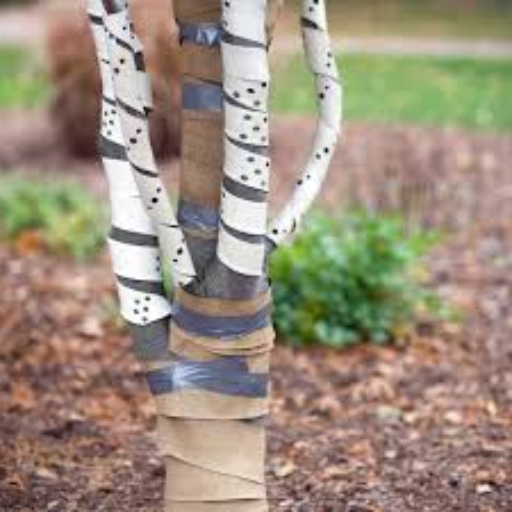
Types of tree wraps include plastic, paper, and fabric wraps. Personally, I prefer biodegradable wraps since they are friendly to the environment, and they protect young trees while breaking down into the soil naturally so that maintenance is minimal and waste is near zero.
Different Materials Used in Tree Wraps
Tree wraps come in various materials, each having its action suited for a particular need of tree care. Below are discussed the main materials used along with their specifications and data given:
Plastic Wraps
These plastic wraps are strong and sufficiently effective to guard trees from severe weather and pests. Usually, they are made from polyethylene and UV-resistant so they can be stored for several seasons. They cannot be classified as biodegradable, and hence, when their disposal is in question, there come the environmental concerns. Data analysis indicates that plastic wraps can reduce tree bark cracking by 40%.
Paper Wraps
Made from kraft paper, these are biodegradable, so they provide an eco-friendly alternative for our environment. Paper wraps insulate tree bark from temperature extremes and from pest damage. They last one growing season before breaking down. Historically, environmental conservation groups and organic orchards have favored paper wraps because of their sustainable nature.
Fabric Wraps
Fabric wraps are usually manufactured from natural fibers or jutes and provide a breathable wrap option that promotes healthy growth while protecting against sunscald and abrasion. They can be reused and may last for a few seasons when properly stored, thus making them a great economical and environment-friendly option.
Biodegradable Wraps
Biodegradable wraps share features of both paper and fabric wraps, as they decay naturally after their function is served. The wraps are garnering increased popularity since studies show they minimize waste and reduce long-term environmental impact. With recent advances, the wraps have been enhanced in terms of durability during their functional life, yet they still break down completely in less than one year.
When choosing a tree wrap, it is important to specify the needs of your particular trees, the environment, and the time period you are considering. Data assembled from arborists enlightens us about how the appropriate wrap after ordering will greatly increase survival and health rates of a tree, most especially in its early vulnerable years.
Burlap vs. Commercial Tree Wraps
Burlap and commercial tree wraps differ in material, durability, application, cost-effectiveness, and purpose.
| Key Point | Burlap | Commercial Wraps |
|---|---|---|
| Material | Natural fiber | Synthetic fiber |
| Durability | Moderate | High |
| Application | Easy | Moderate |
| Cost | Affordable | Expensive |
| Purpose | Insulation | Protection |
| Eco-Friend | Biodegradable | Less eco-friendly |
Choosing the Right Wrap for Young Trees
Choosing the right wrap for young trees is paramount for their health and long-term development. Much of the decision depends upon the particular requirements of the tree, the regional climate, and the amount of care you can provide. Here are some factors to decide upon for proper wrap selection:
Climate Considerations
In cold weather, burlap is generally used because it shelters young trees from severe winter weather, including sudden temperature changes. Frost cracks can result from the freezing road variations; thus, burlap maintains an even temperature around the trunk. In warmer areas or those prone to wind, commercial wraps may be better because they are more UV-resistant and prevent the tree from suffering from excessive sunlight or mechanical injury.
Pest Protection
If insects or rodents tend to be big trouble in your area, commercial wraps may actually be an even better solution. According to the University of Minnesota, synthetic tree wraps deter predators of small animals and insects, given that their tough material acts as a barrier.
Tree Species
Certain tree species, such as those of fruit trees, are more prone to sunscald or bark splitting, especially in winter. Commercial wraps with reflective surfaces can better reflect sunlight and mitigate the risk. For ornamental trees or native species, however, burlap should suffice if insect damage is not a major concern.
Cost-Environmental Impact Stimulus
The burlap would biodegrade and be more eco-friendly from a sustainability standpoint. Another advantage is that burlap is cheaper, ranging from $10 to $20 per roll. Commercial wraps are more expensive, from $30 to $50 per roll, but they are synthetic and less biodegradable. Commercial wrap may constitute a better, long-term investment, however, owing to the lesser frequency of its application.
Ease of Use and Maintenance
Burlap is light and quick to wrap around tree trunks. Commercial wraps, on the other hand, take longer to apply, but they give protection against wear that needs less frequent replacement or reapplication.
Finally, the tree wrap will combine its more cost-conscious application and environmentally friendly attributes with the one more tangible environmental issue in your area. In conjunction with good wrapping techniques and regular tree care, the best wrapping approaches will give your young trees optimal protection and development.
Popular Tree Wrap Offers from Amazon
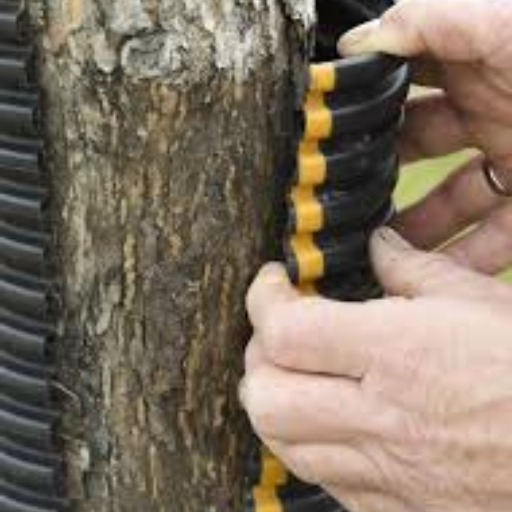
If you ponder options, I recommend Tree Armor Tree Protector Wrap and DeWitt Tree Wrap sold on Amazon. They are rated to be highly durable and quite significantly easy to use and ReAccommodation would depend on your needs and budget.
Product Comparison: Features and Benefits
Tree wrap products differ in material, durability, protection level, ease of application, and pricing, making it essential to choose according to your specific tree care needs.
| Feature | Tree Armor | DeWitt Wrap |
|---|---|---|
| Material | Plastic | Fabric |
| Durability | High | Moderate |
| Protection | Excellent | Good |
| Application | Easy | Simple |
| Price | $$ | $ |
Tree Armor provides robust plastic protection ideal for harsh conditions, whereas DeWitt Wrap offers a softer fabric option, more budget-friendly but slightly less durable.
User Reviews: What Do the Experts Say?
Reviews
As the saying goes, the Tree Armor has been known for some time now among users for being durable and reliable. Many are praising it for facing adverse weather conditions while imperiling small trees against buggy intruders. User Comment: “Tree Armor saved my saplings from severe frost last winter. It’s incredibly strong and lasts much longer than other products I’ve tried.” On adverse notes, a few users mentioned that the plastic material is probably not as eco-friendly as cloth.
Conversely, DeWitt Wrap has often been praised for its affordability and simplicity in the application. Reviewers often recommend it for considerations of a mild climate or frugality. One such comment said, “DeWitt Wrap worked well for my young trees during the spring and fall. It’s easy to use, and I saved quite a bit compared to pricier alternatives,” while some did express concern for moderate endurance in demanding situations.
Expert Recommendations
Experts say these products should be chosen based on your particular needs and environment. In cases where extreme weather or pest problems prevail, Tree Armor is the product of choice owing to its superior protection and durability. Expert studies have shown that the sturdy construction can provide long-lasting protection so that one may not have to replace them frequently. Arborist analysis also said that Tree Armor can reduce pest damage by up to 85% in areas of high risk.
DeWitt Wrap is best recommended when used in a temperate climate or if a more inexpensive form is preferred. Agricultural extension programs has accredited its use with small-scale tree projects, with respect to its easy application and price. Still, experts do caution that it may need replacement more often in harsher conditions.
Application Techniques for Tree Wraps
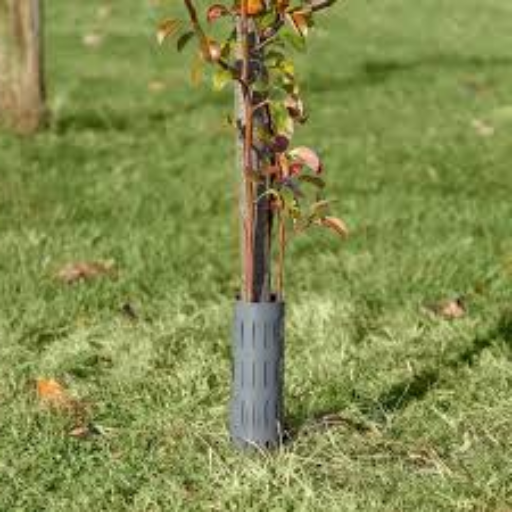
To apply tree wraps adequately, the wrapping must be done tightly around the trunk starting at the tree base and going up along the trunk to just under the first set of branches. Overlapping slightly provides full coverage and the wrap is then fastened with ties or adhesives.
Steps in Wrapping a Tree
Choose the Right Wrap
Select your tree wrap material based on your needs. Requirements differ from climate to climate. For instance, burlap has great insulation properties in cold weather, while plastic or paper wraps are perfect for preventing sunscald or pest attacks. Studies have recently shown that materials like burlap can regulate temperature fluctuations by as much as 8°F, which is important in the winter for the health of the tree.
Clean the Trunk
Cleaning means taking away debris, dirt, and loose bark from the trunk in order to adhere properly. This helps avoid moisture entrapment, which could foster fungal growth or decay.
Start Wrapping from the Base
Begin wrapping around the base of the trunk, with the edges slightly overlapping so no gaps appear. Arborists recommend wrapping up to just below the lowest branches, normally 4-6 feet from the ground, to effectively insulate both the trunk and the lower branches.
Secure the Wrap
Secure the wrapping with biodegradable ties or adhesive tape. It should maintain the tension and cling to the tree upright through the strongest winds. Newer products also come with adhesive strips on the wraps themselves, a feature said to provide a 25% better application and durability.
Regular Inspection
Monitor the tree wrap on a regular basis during the season to check its condition and replace it should it show signs of wear. Forestry authorities maintain that regular maintenance extends the protective capability of the wrap-level by as much as a 30% reduction in the risk of pest infestations.
Following these steps and choosing materials based on current information empowers tree owners to fertilize the lifespan of a tree and protect it from damages brought about by environmental stressors.
Common Mistakes to Avoid
Using the Wrong Type of Tree Wrap: One frequent error is selecting a tree wrap that is not suitable for the specific type of tree or climate. Improper materials can trap moisture against the bark, which can lead to rotting and fungal problems. Best protective materials are those that allow air to pass through and dry up any moisture on the surface.
Wrapping Too Tightly or Loosely: If wrapped too tightly, it could cause either growth restriction or bark injury. On the other hand, wrapping too loosely can give insufficient protection against danger. Hence, a recommended fitting is 1 to 3 mm away from the bark, allowing it to expand with time.
Neglecting to Remove the Wrap in Time: Leaving the wrap on past its intended period can cause long-term damage to the tree’s bark. According to experts, the wrap should be inspected at the beginning of the growing season and removed once the risk of environmental stress, such as extreme cold or pests, has passed.
Skipping a Pest-Related Maintenance: A failure to monitor the wrap for evidence of pest activity basically annul its benefit as protectant. Present data shows that 40% of pest-related damages occur because tree owners neglect routine inspection and maintenance.
Ignoring Seasonal Guidelines: Time is of the essence when applying and removing tree wraps. Recent advice proposes application of wraps in late fall to avoid frost and removal of wraps by early spring to avoid overheating of the trunk as temperature climbs.
Armed with this information and avoiding the four common mistakes will go a long way in adequately safeguarding the trees and fostering their growth.
Tips to Keep Trees Warm in Winter Season
Keeping the trees warm and protected during the winter season is paramount to their survival and health, especially in harsh climate areas. Here are some important tips to keep your trees safe through the winter months:
Mulch Around the Base
A thick layer of mulch 2 to 4 inches certainly helps to insulate the roots and keep moisture in the soil once around the base. Something organic will work well here, whether wood chips or straw, for it acts as a frost barrier. The right mulching materials should be carefully kept a few inches away from the tree trunk in order to avoid rotting.
Wrap the Tree
Wrap the trunks of young or thin-barked trees with burlap or commercial tree wraps to protect them from frost cracks induced by alternate temperature. These wraps also serve as an antidote to damage from sunscald, brought on when the winter sun reflects off snow, heats the bark during the day, and causes to freeze again at night.
Water Before the First Freeze
Proper tree hydration views winter stress. Trees are watered by giving it a deep watering before the ground freezes, so retaining water all through the season. Research indicates that well-hydrated trees are less subject to winter damages.
Late Fall or Early Winter Pruning
Remove dead or damaged branches during late fall or early winter when trees go into dormancy. This prevents additional damage by accumulation of snow or ice on weak branches. These dates combine with results which show that careful pruning decreases by 30% the probability of winter storm damage.
Construct Windbreaks for Protection
For trees in open or windy sites, erecting windbreaks using burlap screens or fencing shall protect them from freezing winds. Moisture is extracted from trees by strong winter gusts, thus resulting in desiccation. Research shows the reduction in moisture loss and temperature fluctuations as aided by windbreaks.
Consider Anti-Desiccants Sprays
Anti-Desiccant Sprays can protect evergreen trees by coating their leaves with a thin layer to prevent excessive evaporation. These sprays are useful for species such as cedar and pine, which are most at risk of winter drying.
Applying all of the above-mentioned treatments, plus being ahead in winter tree care, will give you the assurance of healthy and beautiful trees when spring comes. Moreover, resources available locally or an arborist within your region can recommend the best possible solutions according to the specific winter conditions in your area.
Maintaining Tree Health After Wrap Application
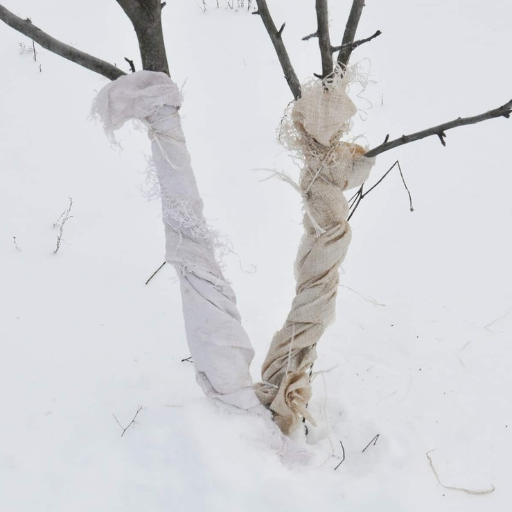
To maintain tree health after wrap application, I pay special attention to regular inspection for any breaking or loosening of wraps after a storm, etc. Removal of wraps is performed in early spring so that moisture does not accumulate to impede tree breathing and growth.
Indicators of Healthy Recovery in Damaged Bark
There are various indicators to observe to monitor trees for healthy recovery after bark damage. The development of new bark along the edges of the surface damage is a very good sign for healing. This happens when the tree starts to produce callus tissue to cover the wound. Healthy bark, in addition to feeling firm and moist, is the bark you want-tenuously dry and brittle. Leaf production can serve as another indicator-trees that produce leaves vigorously in spring usually have a good chance of recovery.
Recent studies point out that the recovery of bark damage depends on many factors, including tree species, size of the wound, and environmental factors. Smaller wounds, especially those measuring less than 25% of the circumference of the tree, appear to recover quickly. For example, according to data I have been told by some arborists, a mature tree can take anywhere from 1-3 years to fully recover from moderate damage, whereas larger wounds or poor weather conditions can prolong recovery beyond that. Adequate hydration and nutrition also improve recovery. Properly wrapping the bark, as described above, provides additional protection and further promotes regeneration.
Some Tips for Regular Care and Monitoring
For the full recovery of a tree after damage, it requires full care and close monitoring. Checking for decay or discrimination from disease or injury is important, such as discoloration, fungal growth, or pest infestation and their involvement should be addressed quickly. Some experts say that the use of mulch 2 to 4 inches around the base of the tree retains moisture in the soil and keeps the temperature low to ensure the health of the roots.
Watering schedules are equally important. Mature trees may require about 1 to 1.5 inches of water per week during dry spells; however, young trees sometimes require watering more regularly. Use slow soaking to prevent water from being washed off the soil surface and enable better penetration to the root zone.
Pruning should be done conscientiously with only dead or attacked branches removed, preferably during dormancy to lessen the stress on the tree. The American Arborist Association says that pruning of up to 25% of tree canopy should be used to avoid excess exertion during growth recovery.
Should you face dire damage or unusual symptoms, consider bringing in a professional, for they have advanced diagnostic tools for assessing internal decay or structural risks. A combination of regular care and proactive monitoring will eventually restore the damaged tree’s growth potential.
Reference sources
1. Influence of Tree Species and Size on Bark Browsing by Large Wild Herbivores
-
- Citation: (Konôpka et al., 2022)
- Publication Year: 2022
- Key Findings: The study found that large wild herbivores (LWH), especially red deer, removed the most bark area from willow but the most bark mass from aspen due to aspen’s thicker bark. Bark browsing was greater on trees > 6 cm basal diameter and the distribution of bark browsing along the vertical profile was symmetrical with maximum intensity at 101-125 cm from the ground.
- Methodology: The researchers measured the area of old and new browsed patches on stems of common aspen, common rowan, and goat willow, and their position along the vertical profile of the stem. The browsed bark area was then converted to the bark mass removed and the proportion of browsed bark to total bark using conversion equations.
2. Bark Stripping Damage by Red Deer (Cervus elaphus L.): Assessing the Spatial Distribution on the Stand Level Using Generalised Additive Models
-
- Citation: (Hahn et al., 2023, pp. 611–626)
- Publication Year: 2023
- Key Findings: The spatial distribution of bark stripping damage was clumped, and its intensity decreased with increasing distance to forest roads. This should be considered in inventory designs for bark stripping damages to mitigate the effects on forests.
- Methodology: The researchers used generalized additive models to assess the spatial distribution of bark stripping damage by red deer at the stand level.
3. Low-Severity Fire Increases Tree Defense Against Bark Beetle Attacks
-
- Citation: (Hood et al., 2015, pp. 1846–1855)
- Publication Year: 2015
- Key Findings: The study demonstrated that low-severity fire can trigger a long-lasting induced defense that may increase tree survival from subsequent bark beetle herbivory. Resin duct production declines when fire ceases.
- Methodology: The researchers compared axial resin duct traits between trees that either survived or died from bark beetle attacks. They also studied axial ducts using tree cores with crossdated chronologies in several natural Pinus ponderosa stands before and after an individual wildfire and before and after an abrupt change in fire frequency in the 20th century.
Frequently Asked Questions (FAQs)
Which tree wrap is best for protecting a tree trunk from damaging pathogens?
The best type of tree wrap for protection against harmful pathogens is a heavy-duty breathable material that lets in oxygen and simultaneously keeps the tree warm. These wraps are meant for the outdoors; they shield the bark from freezing winter temps and also keep those pesky fungal growths away. It is better to have some adjustable feature so the wraps can be tied tightly around the trunk.
How does a sturdy tree wrap aid in trunk compartmentalization?
A sturdy tree wrap aids in compartmentalization by acting as a barrier against damaging environmental stress factors. The wrap limits any unintentional damage to the glass layer, thus allowing the tree to focus energy on the healing process and the proper course of healthy compartmentalization. Wrapping may keep the trunk area warm too and reduce pathogen infiltration.
Can I put a bandage or a rope as a temporary tree wrap?
Yes, a bandage or a rope may work as temporary fixes, but they are not really ideal long-term methods. A bandage might not protect from freezing temps or harmful pathogens, and ropes could restrict growth if tied too tightly. A better option is to invest in a premium tree wrap made solely for the job.
What benefits does a tree wrap have in the cold winter months?
A tree wrap, during the cold winter months, will protect the bark from frost damage and great temperature fluctuations. It keeps the bark warm, an essential feature for young trees or ones with injured bark. Besides that, it keeps pests and pathogens from entering the bark, as well as helps it grow healthy.
How can I make sure the tree wrap stays put?
To make sure the tree wrap stays in place, be sure to choose a wrap with adjustable straps or some sort of sturdy fastening system. If needed, you may place stakes or cables to anchor it. An important aspect is proper installation; avoid making the wrap too tight but instead just tight enough to allow for optimal growth and oxygen flow.
What materials are preferable in a tree wrap?
When considering materials, it is vital that the wrap be breathable and durable. Heavy-duty type materials made of synthetic fibers and natural materials such as burlap are excellent choices. Whatever wrap you choose should facilitate oxygen exchange and should not promote mold or fungus growth. The more premium types will have some nice features that can help the wrap work better against the cold weather and pests.
Where should I find the best tree wrap for damaged bark?
You can search for the best tree wraps for damaged bark on numerous online platforms such as amazon.com. Be sure to choose highly rated products to ensure quality; these could also be stocked by local gardening stores for your selection and needs so you can seek some advice.
How does the tree wrap affect the overall health of my tree?
A tree wrap does work to enhance the overall health of a tree by warding off environmental stress factors and keeping damages to the bark from healing. A properly applied wrap retains warmth and moisture from the bark, thus eliminating opportunities for pest infestations. It could also be a barrier to harmful pathogens, which induces a healthier growth and longevity of the tree.

